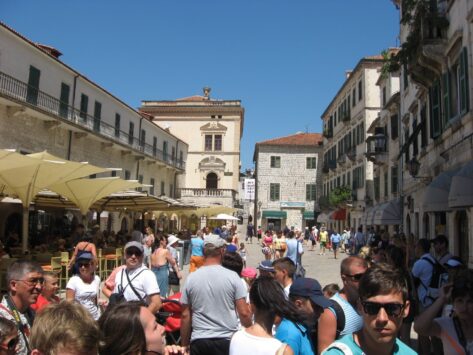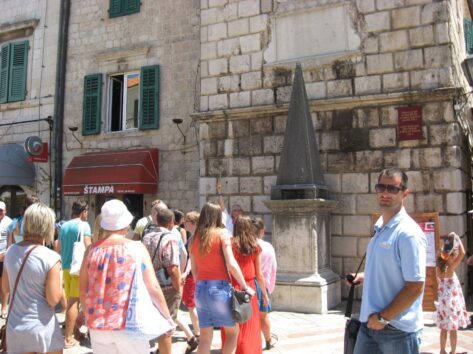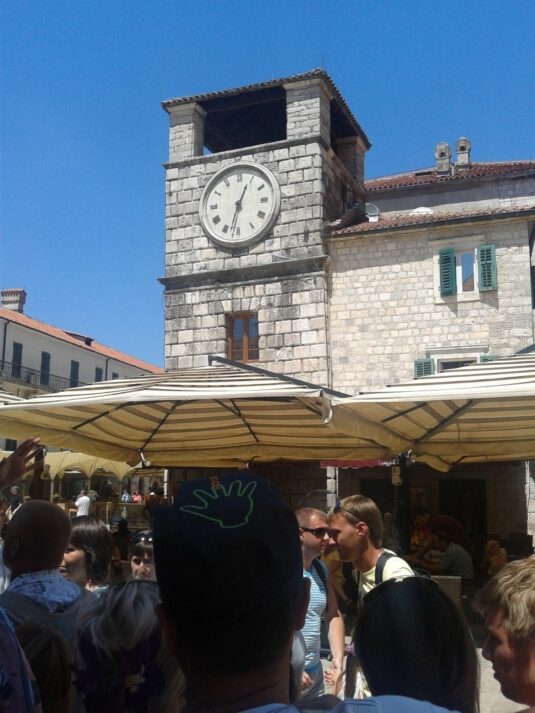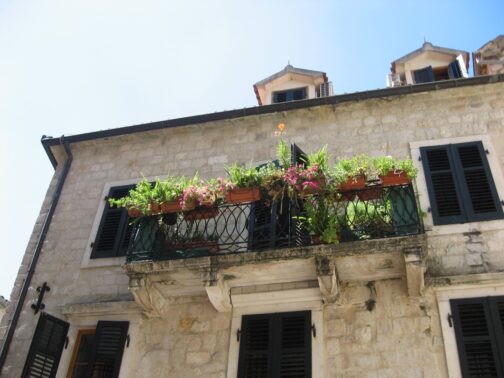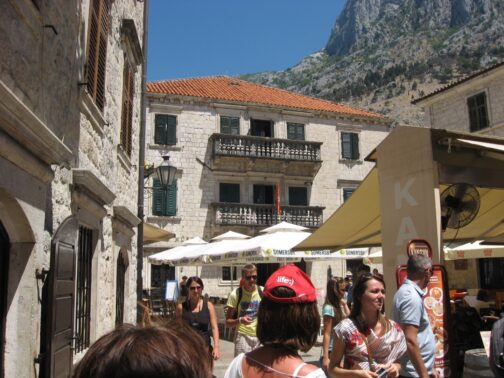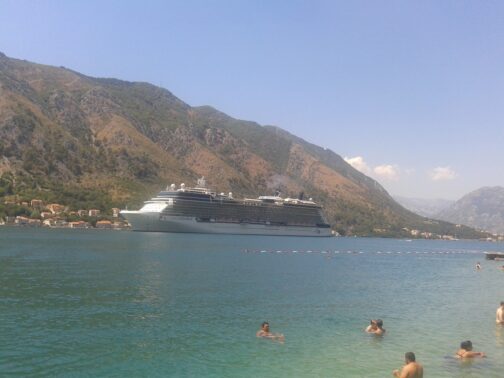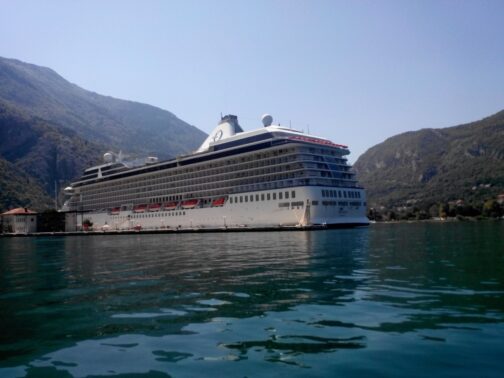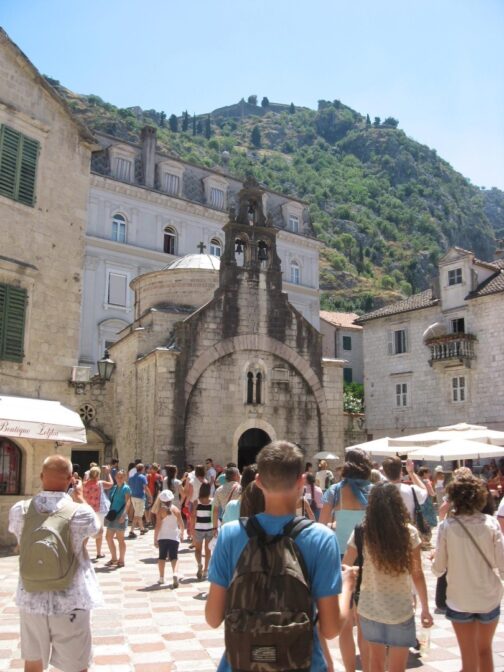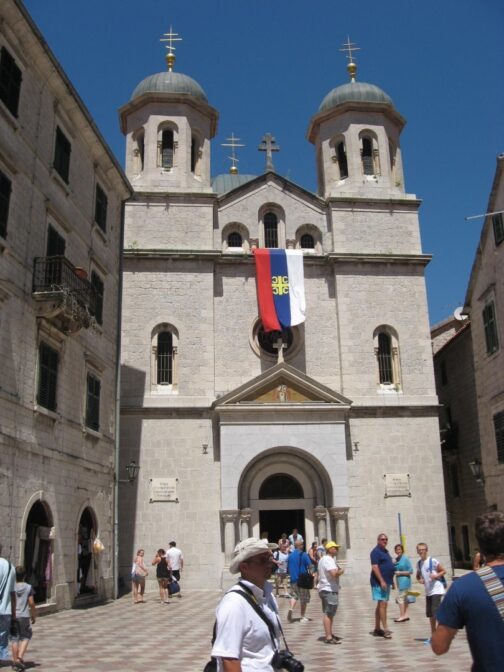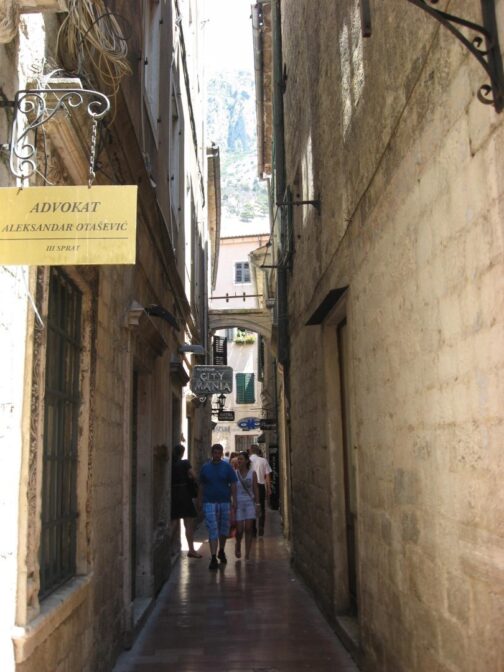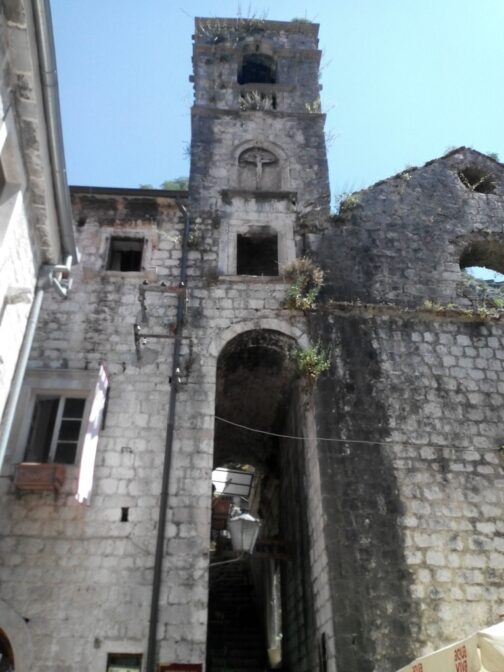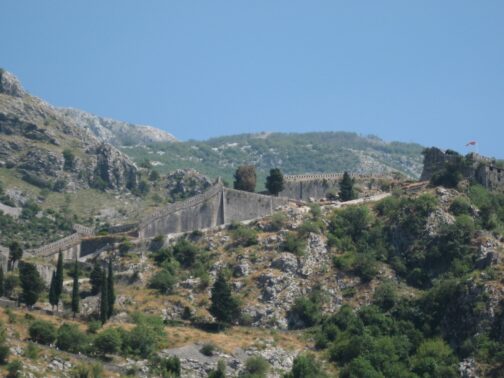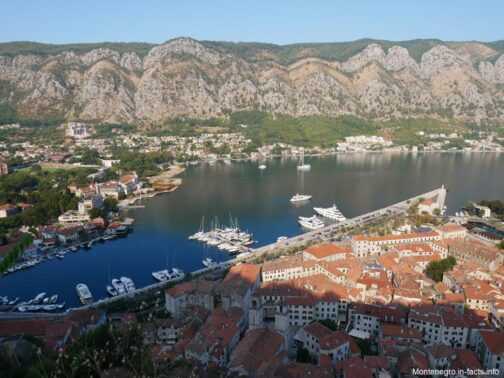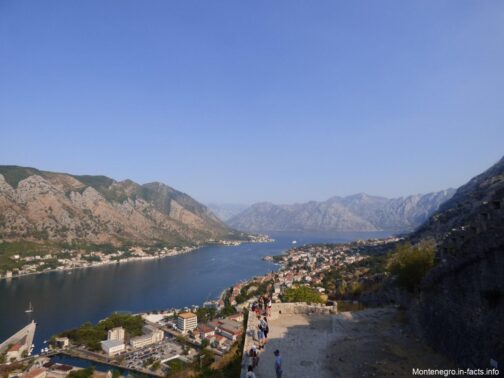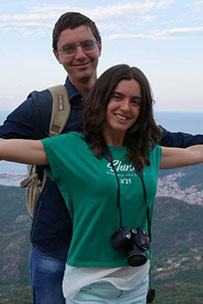The city of Kotor is one of the oldest in Montenegro. By oldest I usually mean not so much the age of the city (some cities are very ancient, but nothing has survived there), but the opportunity to dive into one of the passed eras. And the truth is, what difference does it make how old the town is if it was and remains an unremarkable fishing village?
But there are definitely some things to see in Kotor — beautiful medieval streets, a huge number of churches, a fortress wall, the second largest in the world after the Great Wall of China, which surrounds the city and the surrounding mountains, the amazingly beautiful Bay of Kotor and much more.
It’s easy to get to Kotor. You can use the bus schedule from Budva. Going anywhere from Kotor won’t be a problem either — buses run regularly. For example, a ticket from Kotor to Budva costs 3-3.5 Euro, depending on the carrier.
If you are in Kotor, we advise you to go to Perast (most likely you will have to take a taxi), so you can see the most beautiful bay of Europe and the church, built on an artificial island on which it is located.
Tourists live both within the old city and outside it. Our articles about renting apartments and booking hotels in Kotor will help you to choose the best option in terms of price and quality.
Kotor — a “little Venice”
There are often situations when you come to an advertised city and realize that there is generally nothing to watch here. A couple of ancient ruins, a few unremarkable buildings and some kind of romantic legend.
Fortunately, all this is not about Kotor. It’s looking now almost the same as it was centuries ago, and is very reminiscent of the town of Nessebar in Bulgaria. Well, perhaps Kotor differs from the old times in a number of souvenir shops and cafes. In some places there are so many of them that antiquity is not visible behind them, while others, on the contrary, attract tourists with their medieval flavor. It is pleasant to sit in an ancient stone house, at an oak table and taste the national Montenegrin cuisine.
Since we were on an excursion, we entered through the main gates of the city and first saw the town hall, a small square and barracks. We didn’t sit in the restaurant in our free time, as the guide suggested, but explored the city from the inside. The only pity is that we did not have time to climb the fortress wall.
We visited the city of Kotor during an excursion the Bay of Kotor (by the way, it is one of the 25 most beautiful bays in the world and is considered the most beautiful bay in Europe).
If the bay itself, the church Our Lady of the Rocks and the town of Perast do not attract you very much, you can easily come to the city by public transport. The bus schedule from Budva will help you with this. You can also easily get back by bus.
Wealthy people usually rent a car in Montenegro, but we want to warn you that the roads are very difficult due to the mountainous terrain. By the way, if you still want to rent a car, take a closer look at individual excursions. They are much cheaper than group ones if you have a car.
The previous few lines should help you get to town. Let’s continue our short tour of Kotor. To begin with, we suggest you to look at one of the main squares of the city of Kotor, which is located right at the entrance:
Very briefly about the history of the Kotor
If we talk about history, the city is very ancient. It still remembers the Romans with their invincible legions, it was also a small city-state, for a short time it even became a republic. City more than once burned down and rose from the ashes. It was ruled by Greeks, Romans, Byzantines, Bulgarians, Serbs, Montenegrins …
But the greatest contribution to the development of Kotor was made by Italians. It was at the time when the city was considered the part of Venice (for a period of almost 400 years) when city transformed to the one we see now. At one time, Kotor was considered the largest center of trade and navigation. This is not surprising if you remember that the city is located in a cozy Bay of Kotor, protected from the wind and pirates.
Now the city is becoming one of the largest tourism centers in Montenegro. We were there twice, with an interval of a year, and each time a huge cruise ship was at the pier.
There is definitely something to see in Kotor. Beautiful Italian Mediterranean architecture, the most beautiful bay of Europe, a powerful fortress wall (the second longest after the Great Wall of China), many churches, both Orthodox and Catholic.
If you are interested in the history of Kotor, visit this page on Wikipedia.
Churches and religion of Kotor
Historically, there are many Catholic churches in Kotor and a small amount of Orthodox. Although most of the inhabitants are Orthodox (before, most were Catholics).
Mixed marriages are widely practiced. This is when the child’s father is Orthodox and the mother is Catholic. Or vice versa. For such cases, there is even a tradition: the son will profess the religion of the father, and the daughter — the religion of the mother. There is practically no religious fights in Montenegro.
The city also has a very interesting history associated with the Church of St. Luke. Initially it was Catholic, but during the war against the Turks, many Orthodox Christians moved to Kotor. They did not have their own church and the residents decided to divide the church of St. Luke. A second altar was installed in it and services were held in accordance with both Catholic and Orthodox rites. Over time, there were no Orthodox residents in Kotor and the church became completely Catholic.
The Church of St. Luke changed religion several times, until the inhabitants built the Orthodox Church of St. Nicholas and made the Church of St. Luke completely Catholic. For a time, each denomination had its own church. Then there were fewer Catholics in the city, and the Church of St. Luke changed its religion for the last time, becoming completely Orthodox.
Let’s try to quietly look into the Church of St. Nicholas:
The patron saint of the city is Saint Tryphon, whose relics, redeemed by the townspeople, are kept in the largest church in Kotor. They say that once merchants carried the relics of St. Tryphon to Venice to sell. A terrible storm forced them to hide in the cozy Bay of Kotor. The storm lasted for several days until the locals realized: Saint Tryphon wants to stay in the city. During the night they collected the necessary amount, bought the relics and built for them such a church:
Previously, the entrance to the church was free, but in recent years, due to the huge influx of tourists, the townspeople began to charge fees. If I am not mistaken, on our last visit to the city the entrance to the Church of St. Tryphon cost 3 Euro.
You can read more about the religion of Kotor here (Wikipedia). You may also be interested in our selection of interesting churches and monasteries in Montenegro.
Interesting facts about the city of Kotor
1Kotor is considered the city of cats. By the way, it happened by chance. In Montenegro, cats are called “matzki”, and they respond to “matz-matz” or to the sausages:). Be that as it may, there is a cat square in the city, where you can usually see a lot of these animals. It certainly has nothing to do with the fact that there used to be a cannery plant here.
2In late July and early August, Kotor hosts a holiday called Kotor International Summer Carnival. The city turns into a kind of version of the Venetian carnival for several days. Performances and costume parades do not stop for a minute. At this time, it is absolutely impossible to fall asleep even at night. The holiday is visited by approximately 30,000 tourists every year.
3The Croatian consulate is located in Kotor. Directly in the souvenir shop “Cattaro” (this is in the Sea Gate) you can buy a tourist voucher and book accommodation for visiting Dubrovnik — one of the most beautiful cities in Croatia.
4Most of the souvenir shops, fish restaurants and cafes of Kotor are located right in the old buildings. It goes without saying that furniture and interiors are as close as possible to that time.
5By the way, the city is very clean. The streets here are washed with shampoo twice a day. This tradition dates back to the Middle Ages, when the city suffered severely from the plague several times, and has survived to this day. It is really very clean in Kotor.
6The city is also known for having the most crazy people in all of Montenegro. It seems that the hot climate, mountains surrounding Kotor from all sides and narrow stone streets do not have a very beneficial effect on the psyche.
If you will be in the city for a long time, be sure to try climbing the fortress wall — the view from there is simply amazing. Just do not forget to take water and hats with you — it’s always quite hot in Kotor, and even more so on the wall.
Let’s take a look at the city from above and move on. After all, there are still so many unexplored corners in Montenegro!
